Instruction
The Top 10 Short Game Mistakes

Over the years of instructing, I have noticed many things that people tend to do incorrectly within their short games that continues to cost these players shot after shot, day after day! It pains me to see these wasted shots; furthermore, it screws up your round.
The short game experts have noted for years that improving the short game is the best way to lower your scores and your subsequent handicap — so I urge you to give it a try!
Below you will find the “Top 10 Short Game Mistakes” that I see day after day in my instructional academies. These mistakes below affect the beginning golfer, as well as the single-digit handicapper. Thus, these tips will give you lifelong success around the greens regardless of who you are. Enjoy!
Putting
The Hand Slap
If you look at the address position of your hands in the mirror, you will notice that the forward wrist is for all intents and purposes “flat,” while the rear wrist is bent. This allows the hands to lead and power the shaft and putter head during the stroke. When these alignments are maintained into the backstroke, at impact and into the follow-through, you will have much better control of the direction and speed of your putts. Remember that the forward hand controls the direction that the ball leaves the blade, while the rear hand controls the loft of the blade; thus, if you can’t control your impact alignments you will surely fail on the greens.
In the mirror, practice making strokes monitoring these alignments. You will notice that when you do, your putter blade will have a very solid stroke path driven by the shoulders. At the finish, you should see the same wrist alignments that you began with. But if you see that the rear wrist is flat and the forward wrist is bent, then you will have the dreaded “hand slap” that causes many people to putt poorly. This is a “look, look, look” situation and all it takes to eliminate this slap once and for all is a few daily strokes in the mirror monitoring your hands.
The Illusion of the Putter shaft
If you address the putter in the mirror and look down, you will see that from the player’s eyes the club shaft looks perpendicular to the ground. However, if you look up in the mirror you will see that the shaft is leaning backwards slightly. This is the Illusion of the putter shaft.
Putter manufacturers have placed the shaft behind the blade for whatever reasons, but it is up to the player to understand this illusion because it is different with all putters. If you do not, then you will always place the hands behind the putter head at address and find it impossible for the hands to lead the club through impact.
A good rule of thumb is to forward press your hands to the first belt-loop of the belt buckle toward your target. This usually puts the putter shaft into better position. You must take the time to use your eyes and your mirror to understand this principle, because only you know what you see from above. So you must decipher the correct position of your hands and club shaft even though the eyes are receiving poor information due to the “Illusion of the putter shaft.”
Chipping
The Ball’s Position
The most deadly mistake in chipping is the dreaded chili-dip. I hate to see anyone slap at it and move the ball about two feet, because to your score it is almost as deadly as the outright shank!
Whenever I see the chili-dip, I usually notice one thing right from the start, even before the backstroke has begun — the ball’s position. In order to hit a chip effectively, you must have the ball in front of your rear foot so that you can impart a descending blow to the ball while using the proper type of swing that will be described below. Most of the time I notice in my chipping lessons that the ball is center to forward in the stance. That’s asking … begging to be mishit!
Please take the time and place the ball in the proper position in your stance from the beginning or you will have a tougher time with chipping than you really need to have. It is from this distance that you should be thinking about making a few from off the green, not struggling to hit it solidly.
Use a Putting Stroke, NOT a Hit
Now that you have the ball in the correct position, directly in front of your rear toe, the next thing is to give the club the ability to produce very solid and controllable shots while this close to the green. The biggest mistake I see with chipping, next to the improper ball position, is using a “hitting” type of motion as you would use in your full swing. That causes the impact alignments (mentioned in the putting section) to break down. This soft shot requires a “putting” stroke where the hands are dead with no wrist break on the way back or through. This is the key to chipping well and the biggest mistake I see from day to day.
The “hit” will cause your hands to become overactive through the ball and this will cause the ball to leave the blade in an uncontrolled fashion. Around the greens, especially in chipping, you need all the “touch” possible because if you are this close to the green you should at least get up and down 50 percent of the time or more. Use your putting stoke and you will see just how much easier this will become!
Pitching
The Role of the Ball’s Position
The first question I ask anyone trying to hit a pitch shot is what trajectory are they going to use? If they can answer that question, then the next question I ask them is what ball position accommodates the trajectory they are trying to use?
Ninety percent of the time I see players trying to hit pitch shots with the ball in the rear of their stances. This is fine if you are trying to hit it low, but if you have another trajectory in mind then you will have to manipulate your weight and/or hands through the ball, which is an unreliable action at best. I will give you a simple way to hit the ball varying trajectories — by moving the ball around in your stance. Yes, there are other ways to hit the ball higher or lower, but this is the most foolproof way I know to keep it very simple.
If you are trying to hit the ball high, put the ball in the forward portion of your stance. If you are trying to hit the ball your normal height then place the ball under your sternum. Finally, if you desire to hit the ball lower, place the ball in the rear portion of your stance. These three simple ball positions must match up with the shot you are trying to hit or you are history around the greens for sure.
The Shank
Nothing in the world can ruin your day faster than the shank for sure, but in order to get out of this dilemma you must first understand WHY you are shanking it. Article after article has been written about techniques that get you out of the shanks, but few I have read address the real problem — the swing’s path.
When you shank the ball, your swing path is either either moving severely in-to-out or out-to-in.Whatever the reason for it, the bottom line is that if you don’t know what swing path you are using to shank the ball then you’re not going to have a lot of luck fixing the shanks! There are two simple drills for the shanker:
In-to-out shanker: Place a head cover or board just outside your target line and you will be forced to make a better pivot motion through the ball. This will help fix the in-to-out path. This drill is very effective because it gives instant feedback as to when a golfer swings too much from the inside. If they do, they hit the headcover.
Out-to-in shanker: Place a headcover just outside the ball but angle it toward right field (for the right-handed golfer). Try and make swings from the inside and hit the extreme inside of the ball, but don’t hit the headcover. This will force your swing path to be from the inside — not over the top as you have swung in the past.
These two drills work best if you start with small pitch shots and work op from there SLOWLY. You must gain your confidence first, and then you can add speed!
Bunkers
Improper Side Bending at Address
It seems that most people tend to hit the ball fat or thin out of the bunkers. If you seem to always hit it fat, then this is the tip for you. In the regular shot set-up, you will always have your spine leaning rearward, but in bunkers you want just the opposite. Your spine in the bunker should lean slightly to the forward of center.
This causes the low point of your swing to occur later than normal, eliminating the fat shots. When you lean your spine too much to the rear at address, then you will find that your weight will tend to “hang back” through impact, increasing the probability that the low point of the swing arc will occur too early. That makes you hit fat shots.
This hang back will also cause many other things to happen, but if you want to avoid all these poor shots then just simply lean your spine to the left. Using the “line” drill and this new spine tilt you will be better able to track when the club bottoms out. This will help you to have consistency out of the bunkers like never before.
The “U” versus the “V”
When you hit the ball thin and over the green head high at Mach 1, then you will be like the millions of golfer who don’t understand the “angle of attack” and what it will do to the ball’s flight out of a bunker. Most golf shots are struck with a “U” type of action, where the club gently rises and falls, like the letter “U.”
But, in a bunker when you are trying to hit a softer shot to a tight pin, you must hit the sand first. To do this you must re-arrange your swing’s path to look like a “V.”
This quick setting of the wrists and steeper angle of attack will cause you to hit the sand behind the ball. Your job is to keep moving and not cut off the forward swing! If you are successful in changing your angle of attack, then you will notice that for shorter shots the “V” is best and for very long bunker shots, where a lower shot is more acceptable, the “U” will work as long as you set your wrists enough to hit the sand. Experiment and you will love the results!
The Mental Game
Where to Leave the Ball
During schools, I see people hitting shots around the green with absolutely no regard for where they are leaving the ball. I would rather have a day of 10-foot uphill right-to-left putts (as a right-handed player) than a 5-foot downhill left-to-right sliding putt on fast greens. If you doubt this fact, come to the mountains and hit the ball above the hole!
Remember this: In darts you aim at a very small target on the board, not at the total board, and thus, your dispersion pattern is very tight to your target. Golf is the same way — if you just aim at the hole, you will have a wide array of shots and putts to make. But if you aim at a certain quadrant of the hole, then you will find a much tighter dispersion of shots, not to mention easier putts in general!
Dial-a-Shot
When people come up to the green and have a simple pitch, shot I usually see them grab the lob wedge and head off to the other side of the green to hit their shot. This is the last thing I try and have my students do! I want you to have options –“dial-a-shot” the pros call it– where you have one shot with several ideas on how to play it.
There are times where the shot calls for one type of execution, but your nerves call for another or vice-versa. If you only have one way to play shots around the greens, then you are severely limiting yourself on the golf course. Take the time to experiment with different clubs under different circumstances and you will see that sometimes a putter is a better choice over the 7 iron, or the lob wedge is better than the pitching wedge. Whatever the choice, take your time to think and identify what you are trying to do and you will be much happier with the results.
I hope by now you have seen that these mistakes plague many players from good to bad. Take your time and eliminate the top-10 mistakes and your scores will lower. I guarantee it!
- LIKE26
- LEGIT6
- WOW1
- LOL0
- IDHT0
- FLOP0
- OB0
- SHANK0
Instruction
Clement: Laid-off or perfect fade? Across-the-line or perfect draw?

Some call the image on the left laid off, but if you are hitting a fade, this could be a perfect backswing for it! Same for across the line for a draw! Stop racking your brain with perceived mistakes and simply match backswing to shot shape!
- LIKE0
- LEGIT0
- WOW0
- LOL0
- IDHT0
- FLOP0
- OB0
- SHANK1
Instruction
The Wedge Guy: The easiest-to-learn golf basic

My golf learning began with this simple fact – if you don’t have a fundamentally sound hold on the golf club, it is practically impossible for your body to execute a fundamentally sound golf swing. I’m still a big believer that the golf swing is much easier to execute if you begin with the proper hold on the club.
As you might imagine, I come into contact with hundreds of golfers of all skill levels. And it is very rare to see a good player with a bad hold on the golf club. There are some exceptions, for sure, but they are very few and very far between, and they typically have beat so many balls with their poor grip that they’ve found a way to work around it.
The reality of biophysics is that the body moves only in certain ways – and the particulars of the way you hold the golf club can totally prevent a sound swing motion that allows the club to release properly through the impact zone. The wonderful thing is that anyone can learn how to put a fundamentally sound hold on the golf club, and you can practice it anywhere your hands are not otherwise engaged, like watching TV or just sitting and relaxing.
Whether you prefer an overlap, interlock or full-finger (not baseball!) grip on the club, the same fundamentals apply. Here are the major grip faults I see most often, in the order of the frequency:
Mis-aligned hands
By this I mean that the palms of the two hands are not parallel to each other. Too many golfers have a weak left hand and strong right, or vice versa. The easiest way to learn how to hold the club with your palms aligned properly is to grip a plain wooden ruler or yardstick. It forces the hands to align properly and shows you how that feels. If you grip and re-grip a yardstick several times, then grip a club, you’ll see that the learning curve is almost immediate.
The position of the grip in the upper/left hand
I also observe many golfers who have the butt of the grip too far into the heel pad of the upper hand (the left hand for right-handed players). It’s amazing how much easier it is to release the club through the ball if even 1/4-1/2″ of the butt is beyond the left heel pad. Try this yourself to see what I mean. Swing the club freely with just your left hand and notice the difference in its release from when you hold it at the end of the grip, versus gripping down even a half inch.
To help you really understand how this works, go to the range and hit shots with your five-iron gripped down a full inch to make the club the same length as your seven-iron. You will probably see an amazing shot shape difference, and likely not see as much distance loss as you would expect.
Too much lower (right) hand on the club
It seems like almost all golfers of 8-10 handicap or higher have the club too far into the palm of the lower hand, because that feels “good” if you are trying to control the path of the clubhead to the ball. But the golf swing is not an effort to hit at the ball – it is a swing of the club. The proper hold on the club has the grip underneath the pad at the base of the fingers. This will likely feel “weak” to you — like you cannot control the club like that. EXACTLY. You should not be trying to control the club with your lower/master hand.
Gripping too tightly
Nearly all golfers hold the club too tightly, which tenses up the forearms and prevents a proper release of the club through impact. In order for the club to move back and through properly, you must feel that the club is controlled by the last three fingers of the upper hand, and the middle two fingers of the lower hand. If you engage your thumbs and forefingers in “holding” the club, the result will almost always be a grip that is too tight. Try this for yourself. Hold the club in your upper hand only, and squeeze firmly with just the last three fingers, with the forefinger and thumb off the club entirely. You have good control, but your forearms are not tense. Then begin to squeeze down with your thumb and forefinger and observe the tensing of the entire forearm. This is the way we are made, so the key to preventing tenseness in the arms is to hold the club very lightly with the “pinchers” — the thumbs and forefingers.
So, those are what I believe are the four fundamentals of a good grip. Anyone can learn them in their home or office very quickly. There is no easier way to improve your ball striking consistency and add distance than giving more attention to the way you hold the golf club.
More from the Wedge Guy
- The Wedge Guy: Golf mastery begins with your wedge game
- The Wedge Guy: Why golf is 20 times harder than brain surgery
- The Wedge Guy: Musings on the golf ball rollback
- LIKE86
- LEGIT13
- WOW6
- LOL1
- IDHT0
- FLOP4
- OB1
- SHANK8
Instruction
Clement: Stop ripping off your swing with this drill!

Not the dreaded headcover under the armpit drill! As if your body is defective and can’t function by itself! Have you seen how incredible the human machine is with all the incredible feats of agility all kinds of athletes are accomplishing? You think your body is so defective (the good Lord is laughing his head off at you) that it needs a headcover tucked under the armpit so you can swing like T-Rex?
- LIKE0
- LEGIT2
- WOW2
- LOL0
- IDHT0
- FLOP0
- OB0
- SHANK2
-

 19th Hole2 weeks ago
19th Hole2 weeks agoDave Portnoy places monstrous outright bet for the 2024 Masters
-

 19th Hole3 days ago
19th Hole3 days agoJustin Thomas on the equipment choice of Scottie Scheffler that he thinks is ‘weird’
-

 19th Hole2 weeks ago
19th Hole2 weeks agoTiger Woods arrives at 2024 Masters equipped with a putter that may surprise you
-

 19th Hole3 days ago
19th Hole3 days ago‘Absolutely crazy’ – Major champ lays into Patrick Cantlay over his decision on final hole of RBC Heritage
-

 19th Hole2 weeks ago
19th Hole2 weeks agoTwo star names reportedly blanked Jon Rahm all week at the Masters
-

 19th Hole1 week ago
19th Hole1 week agoReport: LIV Golf identifies latest star name they hope to sign to breakaway tour
-

 19th Hole1 week ago
19th Hole1 week agoNeal Shipley presser ends in awkward fashion after reporter claims Tiger handed him note on 8th fairway
-

 19th Hole1 week ago
19th Hole1 week agoBrandel Chamblee has ‘no doubt’ who started the McIlroy/LIV rumor and why

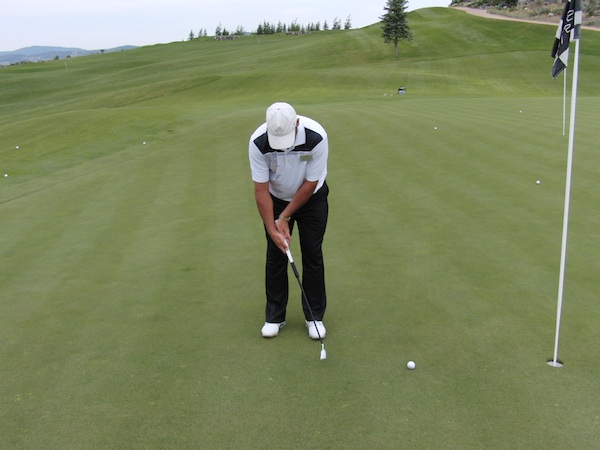

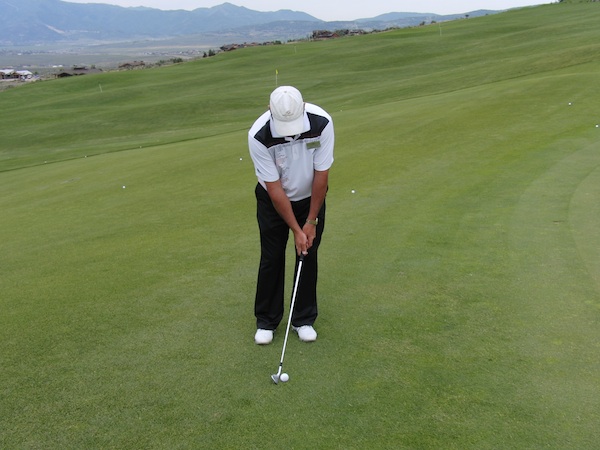
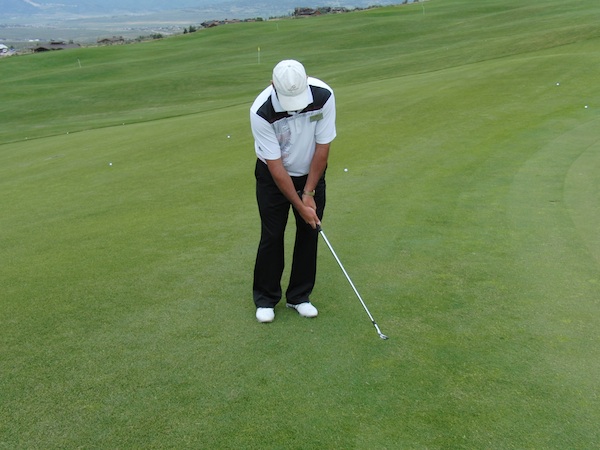


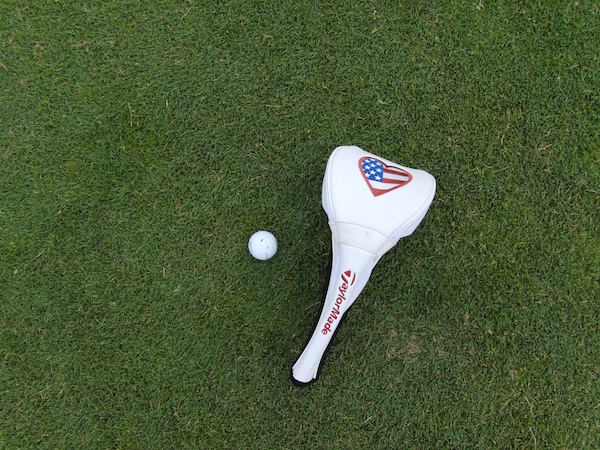

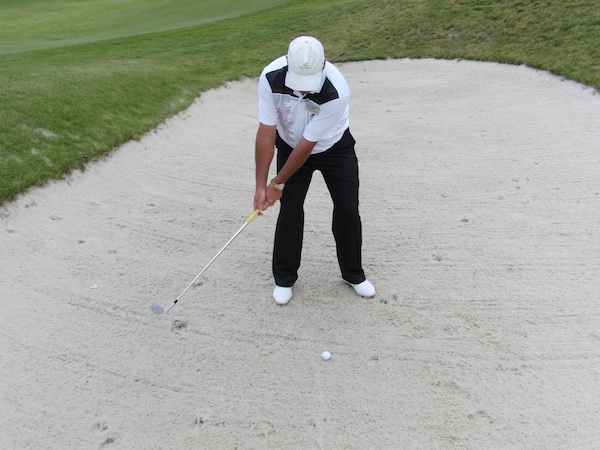
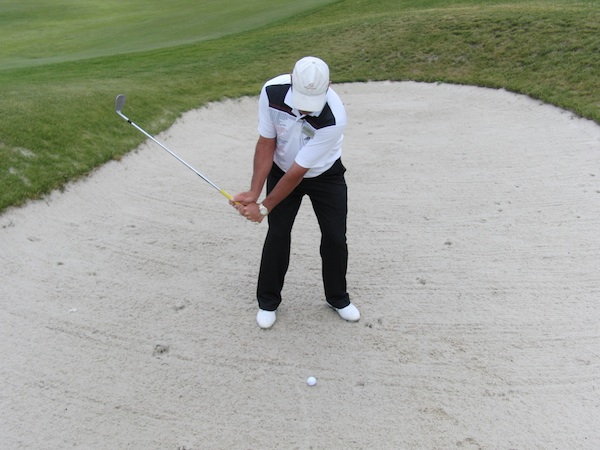
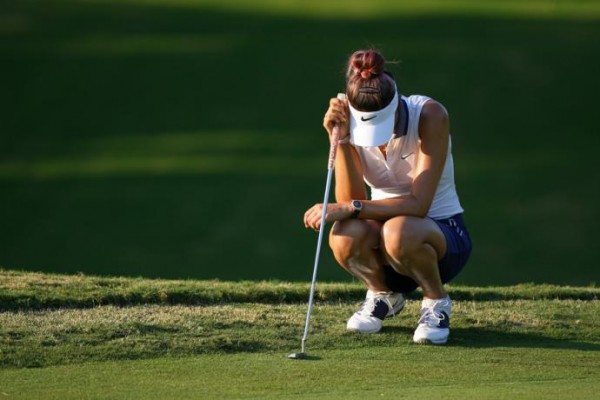























Golfraven
May 14, 2014 at 5:42 pm
After a not so great round today I see where I left the shots. Putting and chipping. I may switch to the cross handed grip to keep the front hand more straight and passive. I didnt strike it well on longer putts. I watched a video of Jordan Spieth chipping and he also talks about the ball position being more towards the rear foot.
Through your great insight I am more aware of those fundamentals and I can pay more attention to it even when watching golf on TV.
spencer
Aug 7, 2013 at 12:14 am
WRT to the ball position in pitch shots to control height – does the varying ball positions affect the amount of spin you can have on the ball? I would imagine that if I moved the ball forward to play a higher shot, that I would be catching it on the upswing and thus higher on the club face…would that make it spin less?
Scott R
Aug 5, 2013 at 9:12 pm
Excellent article Tom – – I really enjoyed it. I’ve let several of these problems creep back into my game over time and these reminders will help eliminate some poor shots.
Kevin P Donovan
Aug 5, 2013 at 11:53 am
Tom, thanks for the tips. I have had some tough rounds lately. More practice is in order and I will use some of your tried and true tips. Oh and thanks for talking us lefties thru your lessons. That is a rare treat, trust me I know.
thanks, Kev
Jerry M. Priester
Aug 7, 2013 at 7:14 pm
Tom, I am really proud to be able to say that I have had you as a teacher. Granted it was a loooong time ago at Houston Levee Golf Club in Collierville Tennessee but I still remember the time. I have followed your career and hope to have a lesson from you again someday. Take care and hit them long and straight.
Jerry Priester
Priester And Associates, Inc..
General Contractors